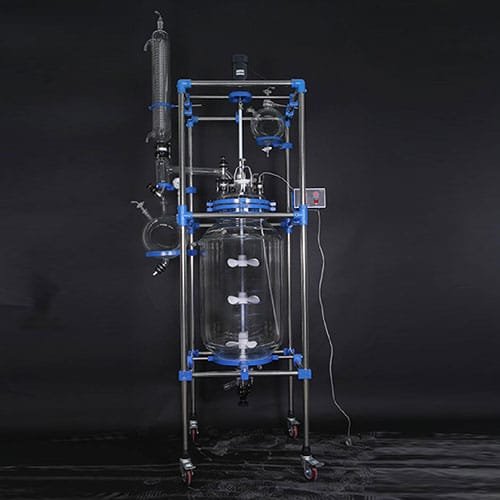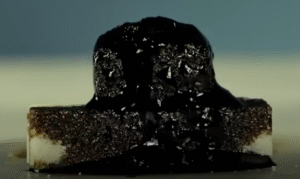A Comprehensive Guide to Jacketed Glass Reactors: Advantages and Key Considerations for Research and Production
The Growing Importance of Jacketed Glass Reactors in Scientific Research
In the world of laboratory research and production, precision is essential, and one tool that has proven indispensable is the Jacketed Glass Reactor. Used across a variety of industries, from pharmaceuticals to chemical engineering, Jacketed Glass Reactors provide a controlled environment for conducting complex experiments. These reactors offer unparalleled temperature control and chemical resistance, allowing for more accurate and repeatable results. EquilRxnLab, a leading supplier of laboratory equipment, offers advanced models such as the 1L Double-Glazed Reactor, designed to meet the rigorous demands of scientific research and industrial applications.

What is a Jacketed Glass Reactor?
A Jacketed Glass Reactor is a type of laboratory reactor that features a double-walled structure, where the outer layer is known as the jacket. The jacket allows for the circulation of heating or cooling fluids, providing precise thermal control during reactions. The inner chamber, made of high-quality borosilicate glass, holds the reaction mixture, while the jacketed outer layer ensures uniform temperature management.
The primary function of a Jacketed Glass Reactor is to maintain optimal temperature conditions for a wide range of reactions, including synthesis, polymerization, extraction, and distillation. For researchers looking to ensure high levels of accuracy, these reactors are a go-to choice. EquilRxnLab’s 1L Double-Glazed Reactor, for example, is designed for small-scale applications, offering both versatility and reliability.
Key Features of a Jacketed Glass Reactor
- Thermal Control and Efficiency
One of the most important features of a Jacketed Glass Reactor is its ability to regulate temperature. The jacketed design allows researchers to heat or cool the inner vessel with a fluid, ensuring that reactions take place at precise temperatures. This is particularly important for reactions that are sensitive to temperature fluctuations, such as those used in the pharmaceutical and chemical industries. - Chemical Resistance and Durability
The reactor’s inner chamber is typically made of borosilicate glass, known for its excellent chemical resistance and thermal shock properties. This makes the Jacketed Glass Reactor suitable for use with aggressive chemicals, strong acids, and solvents. The durability of borosilicate glass also means that the reactor will maintain its integrity and function over time. - Scalable and Customizable
Jacketed Glass Reactors come in a range of sizes, from small-scale models like the 1L Double-Glazed Reactor to larger systems capable of handling up to 100 liters or more. This scalability allows researchers to choose a model that best fits their specific needs. Additionally, many reactors are customizable with options for various seals, stirrers, and condenser systems. - Precise Stirring Mechanism
A key component of many Jacketed Glass Reactors is the stirring system. Uniform mixing of reactants is essential for ensuring accurate and consistent results. High-quality reactors, like those offered by EquilRxnLab, feature adjustable stirring speeds to accommodate different types of reactions, from gentle mixing to high-speed stirring.
How to Set Up a Jacketed Glass Reactor
Setting up a Jacketed Glass Reactor requires careful attention to ensure that all components are functioning correctly. Here’s a step-by-step guide for assembling your reactor:
- Unboxing and Inspection
Upon receiving your Jacketed Glass Reactor, carefully unbox it and inspect each component to ensure there is no damage. Check that all necessary parts, including the glass vessel, jacket, stirrer, and fittings, are included in the package. - Placing the Reactor on a Stable Surface
For safety and stability, place the reactor on a flat, sturdy surface. Many laboratories use fume hoods to house their reactors, as this provides additional safety when handling volatile chemicals. Make sure there is enough space for the necessary external connections. - Connecting the Jacketed Layer
The jacket requires a heating or cooling fluid to regulate the temperature of the inner vessel. Connect the jacket to an appropriate heat source or cooling system, ensuring that the fluid flows freely without any leaks. Always check the fluid levels before starting your reaction. - Setting Up the Stirring System
Attach the stirrer to the reactor and set it to the desired speed. For certain types of reactions, high-speed stirring may be required, while for others, a slow and gentle stir is sufficient. Ensure the stirrer is securely in place to avoid malfunctions during operation. - Checking Seals and Fittings
Double-check that all seals and fittings are correctly installed to prevent leaks during the reaction. Proper sealing is essential for maintaining safety and ensuring the integrity of the reaction environment. - Testing and Calibration
Before conducting any experiments, run a test with the system empty to ensure everything is functioning properly. Check the temperature, stirring, and jacketed fluid flow to confirm that all systems are calibrated and working as expected.
Maintenance Tips for a Jacketed Glass Reactor
To extend the lifespan and maintain optimal performance, regular maintenance is required. Here are a few tips:
- Routine Cleaning
After each experiment, clean the reactor thoroughly to avoid contamination between reactions. Use mild, non-abrasive cleaning solutions and ensure that all residues are removed from both the glass vessel and the jacket. - Inspecting Seals and Gaskets
Regularly inspect the seals, gaskets, and other components for wear and tear. Replace any parts that are showing signs of degradation to prevent leaks and maintain the reactor’s performance. - Lubricating the Stirring Mechanism
The stirring system should be lubricated periodically to reduce friction and wear. This will help ensure smooth operation and prolong the lifespan of the stirrer. - Checking the Heating/Cooling System
Regularly check the heating and cooling systems connected to the reactor. Ensure that there are no blockages and that fluid flows freely through the jacket.
Why Choose a Jacketed Glass Reactor from EquilRxnLab?
EquilRxnLab offers a range of high-quality Jacketed Glass Reactors that combine precision, durability, and efficiency. For smaller-scale applications, the 1L Double-Glazed Reactor is an excellent choice, offering excellent temperature control and robust construction. For larger-scale experiments, EquilRxnLab provides reactors with higher capacities, ensuring that you can find a model that suits your specific research needs.
To learn more about the 1L Double-Glazed Reactor or to make a purchase, visit the product page: EquilRxnLab 1L Double-Glazed Reactor.
Explore More from EquilRxnLab
For additional resources, including product demonstrations and tutorials, visit EquilRxnLab’s YouTube Channel, or follow them on Instagram and Facebook for the latest updates.
Browse more laboratory equipment and products in EquilRxnLab’s catalog.

The Ultimate Acid Reveal: A Fun Chemistry Power Ranking from Weak to Super Acids
This article explores the fascinating world of acids, from weak acids found in everyday life to the extreme strength of super acids. Readers will learn about uric acid, cola, hydrochloric acid, and the legendary fluoroantimonic acid, along with their pH, pKa, and H₀ values. Through vivid examples and fun experiments, the piece explains acid strength, the role of hydrogen ion release, and the chemical principles behind strong and super acids. Perfect for students, educators, and chemistry enthusiasts, the article makes complex concepts accessible, visually engaging, and inspiring for further exploration.

The Role of Benchtop Water Vacuum Pumps in Chemical Labs
The Benchtop Water Vacuum Pump for Chemical Labs from Equilrxnlab offers high-performance vacuum support with a flow rate of 60L/min and a 15L water tank. Ideal for various laboratory applications, it ensures reliable and efficient results. Explore its full features today.


1 thought on “A Comprehensive Guide to Jacketed Glass Reactors: Advantages and Key Considerations for Research and Production”
1